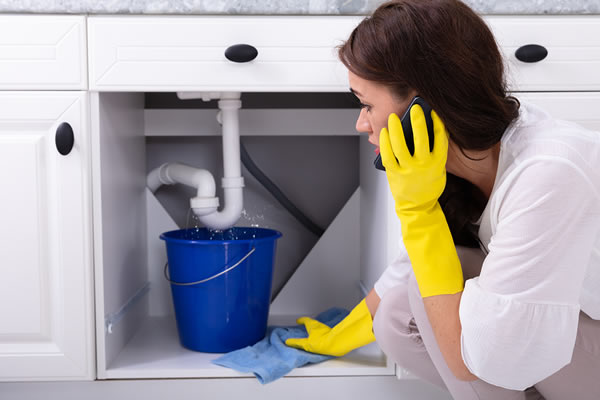We've noticed this article on Locating water leaks below on the net and thought it made good sense to talk about it with you on this site.

Early discovery of dripping water lines can reduce a potential disaster. Some little water leaks might not be noticeable.
1. Analyze the Water Meter
Every house has a water meter. Inspecting it is a proven way that assists you discover leakages. For beginners, turn off all the water resources. Ensure no person will flush, use the tap, shower, run the washing maker or dishwashing machine. From there, most likely to the meter and watch if it will change. Because no one is using it, there should be no activities. That indicates a fast-moving leakage if it relocates. If you detect no adjustments, wait an hour or 2 and examine back once again. This means you might have a slow leakage that could also be underground.
2. Inspect Water Consumption
If you detect sudden modifications, regardless of your consumption being the same, it indicates that you have leakages in your plumbing system. An abrupt spike in your bill indicates a fast-moving leak.
At the same time, a constant rise each month, despite the same routines, shows you have a slow leak that's additionally gradually escalating. Call a plumber to completely inspect your property, especially if you really feel a cozy location on your floor with piping underneath.
3. Do a Food Coloring Examination
When it comes to water usage, 30% comes from toilets. If the shade somehow infiltrates your bowl throughout that time without flushing, there's a leakage between the tank as well as dish.
4. Asses Outside Lines
Do not neglect to inspect your outdoor water lines also. Ought to water permeate out of the link, you have a loose rubber gasket. One small leak can lose lots of water and surge your water bill.
5. Assess the scenario and also check
Property owners should make it a behavior to examine under the sink counters and even inside cupboards for any type of bad odor or mold growth. These two warnings indicate a leakage so prompt focus is needed. Doing regular assessments, also bi-annually, can save you from a significant trouble.
A lot more importantly, if you know your house is currently old, maintain a watchful eye on your heating systems, hose pipes, pipes and so on. Check for discolorations as well as deteriorating as a lot of appliances and pipes have a life span. They will certainly additionally normally weaken due to wear and tear. If you presume leaking water lines in your plumbing system, don't await it to rise. Call a professional plumber right away so you do not end up with a dreadful mess in your home.
Early detection of leaking water lines can reduce a possible calamity. Some tiny water leaks may not be visible. Inspecting it is a proven way that assists you find leakages. One small leakage can throw away bunches of water and spike your water bill.
If you suspect leaking water lines in your plumbing system, do not wait for it to rise.
How to Know If Your Home Has a Hidden Leak
Water Meter Reveals Inexplicable Water Usage
If you’d like to test whether or not there’s a leak somewhere in your home, you can do this using your water meter. Here is how to conduct the test:
Don’t use any water in your home for at least 30 minutes; this also means not turning on faucets or water-using appliances.
Go outside, and check your water meter for activity.
If your water meter shows that there was activity, even though no one was using any water, this proves that there is a leak in your home.Visible Mold or Mildew Growth
Leaks behind walls create moist, dark environments that allow mold and mildew to grow and thrive. Eventually, you might see mold growth forming on the wall closest to a hidden leak.
If mold is growing in an area that receives a high amount of moisture, such as a bathroom, it may simply be an indication that better ventilation is needed. However, if you see mold growth on a wall or the ceiling in an area where you would not expect, you probably have a hidden leak.
Musty, Mildew Odor
Sometimes you might not be able to see the mold or mildew that is growing as a result of a leak. However, the smell can give the problem away just as easily. If you catch a whiff of something musty, there’s a good chance that old water is collecting somewhere in your home that you can’t see.
Stained/Warped Walls, Ceilings, or Floors
When your home soaks up water, a variety of red flags can become visible, including ceiling stains, bubbling drywall, warped walls, and sagging floors. While these issues can be caused by excess humidity, they can also be signs that a pipe or plumbing connection has started leaking behind your walls.
Inexplicably High Water Bill
After a while, you get a general sense for what your water bill should be. If you own a pool or sprinkler system, your bill will tend to be higher during summer. However, if you receive a water bill that seems especially high, and you can’t figure out what caused it, then you may have a hidden leak somewhere that’s increasing your bill.
https://www.plumbingjoint.com/blog/2019/july/how-to-know-if-your-home-has-a-hidden-leak/

We had been shown that editorial on Finding hidden leaks through an acquaintance on another domain. Liked our write up? Please share it. Help another person find it. Thank-you for going through it.